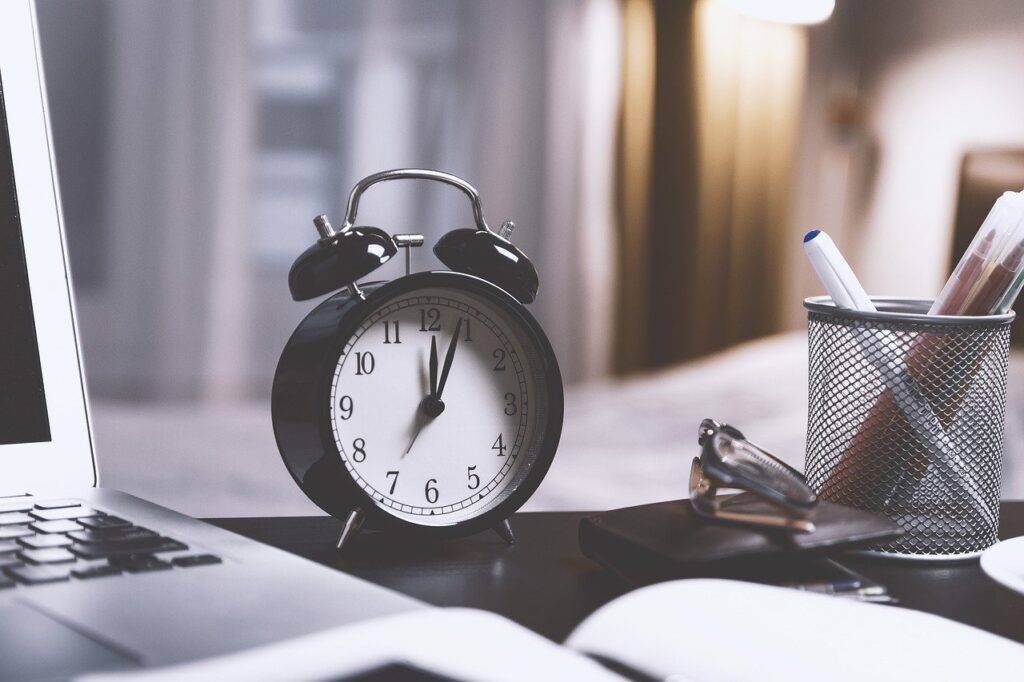
Recently I ran a webinar to compliment my Beating Procrastination Toolkit. The toolkit continues to be the most downloaded tool I’ve ever offered.
Procrastination is a very real thing.
We all procrastinate from time to time and you’re not alone in doing it; most of us do. It doesn’t mean your lazy or unfocussed or a bad person. It just means that you’re human. And most likely that you’ve not found the right tools yet!
As women I think that sometimes procrastination is intrinsically linked with our inner critic, it stops us from doing what we know, we should be doing or what we want to be doing more importantly. When we procrastinate, I believe we’re doing so for one of four reasons:
- It’s too big and I don’t know where to start,
- I’m scared of what might happen. What if I fail?
- I don’t have the time, or
- I simply don’t want to do it.
Having the courage to say no to requests is part of dealing with procrastination. Sometimes, when we find ourselves putting off a task, it’s because it doesn’t align with our values, our priorities, or our purpose. How can we drive ourself to do something when we can’t see a clear purpose for it? This is often because it’s someone else’s priority.
I want to explore with you how to say no clearly, confidently and without worrying about offending people, which is what I think often stops us from saying “No” in the first place.

As women, many of us have been brought up (by society if not well meaning parents) as people pleasers and obligers. We know the double bind of being a woman at work or in business, and that you can either be seen as competent, or as likeable, but not both.
This can make it exceedingly hard for us to say no to requests that we know we should be saying no to because either they don’t fulfil us or they’re not in line with what our purpose goals and values are. We worry about what people will think or say about us if we say “no”. But we have limited time in our day. So why fill it with things that aren’t aligned with bringing you joy?

Author No Longer Last on the List
I was recently on a call as part of the f:entrepreneur #ialso100 cohort. These breakfasts are a thing of joy, and we’re so lucky that the f:entrepreneur team have continued doing them despite all that COVID has thrown at us. This particular breakfast meeting was hosted by Jo Bevilacqua, author of ‘No Longer Last on the List’. Jo introduced us to the ideas behind her book and as part of the conversation we got to talking about the mental load and saying no to requests put upon us.
A fellow #ialso100 on the call shared her methods and techniques for saying no. I thought they were so brilliant that I wanted to share them here.

Beyond Social Buzz
Joanna Michaels runs digital marketing consultancy, Beyond Social Buzz, and recently shared a post on Instagram which outlined some brilliant ways to say ‘no’. She outlines them like this…
The classic “I love you, but no” response. The idea is to give the recipient a few words to feel good about despite the rejection, examples:
” This sounds like a great opportunity, but I have to pass. Thank you for considering me!”
” Your proposal is intriguing and I’m glad you brought it up, but it’s not a good fit for us.” ⠀
Leaving the door cracked: ⠀
“Thanks—I’d love to speak at your event, but the timing this year is no good. Would you please keep me in mind for the next year’s conference?”⠀ ⠀
Reframing “no” with a positive language:⠀
“It’s great to hear that you are considering our services and cannot wait to have you on board. As for the discount request, I’m sorry to say that we don’t offer discounts. We believe that our service offers more value for your money and it will be unfair to our other clients if we make an exception.”
I would add another category to Joanna’s and buy yourself some time. If you are not sure that you can collect yourself in the moment to turn someone down, try a delaying tactic like “Thanks for asking me. Let me check my diary and get back to you.” This gives you time to gather your thoughts and prepare how you want to say no.
As Joanna has pointed out, you don’t actually have to use the word no as she has described above. But do have a go at saying it, start with something small, perhaps something in the home, or to a request that you are in no way obligated to to (for example, saying ‘no thank you’ to someone having out flyers). There are ways you can do this without causing offence or more importantly, feeling like you’ve caused offence.
In all likelihood, people will just say, “okay”, accept your answer, and move on. It is us feeling awkward and dwelling on it.
I’d love to hear how you get on. Please let me know if you manage to try out any of these tactics and you find them useful.
You can find out more about Jo Bevilacqua, author of ‘No Longer Last on the List’ at https://www.jobevilacqua.com/nolongerlastonthelist/ and follow her at @jobevilacquaofficial
You can follow Joanna Michaels at @beyondsocialbuzz and find out more at https://beyondsocialbuzz.co.uk
